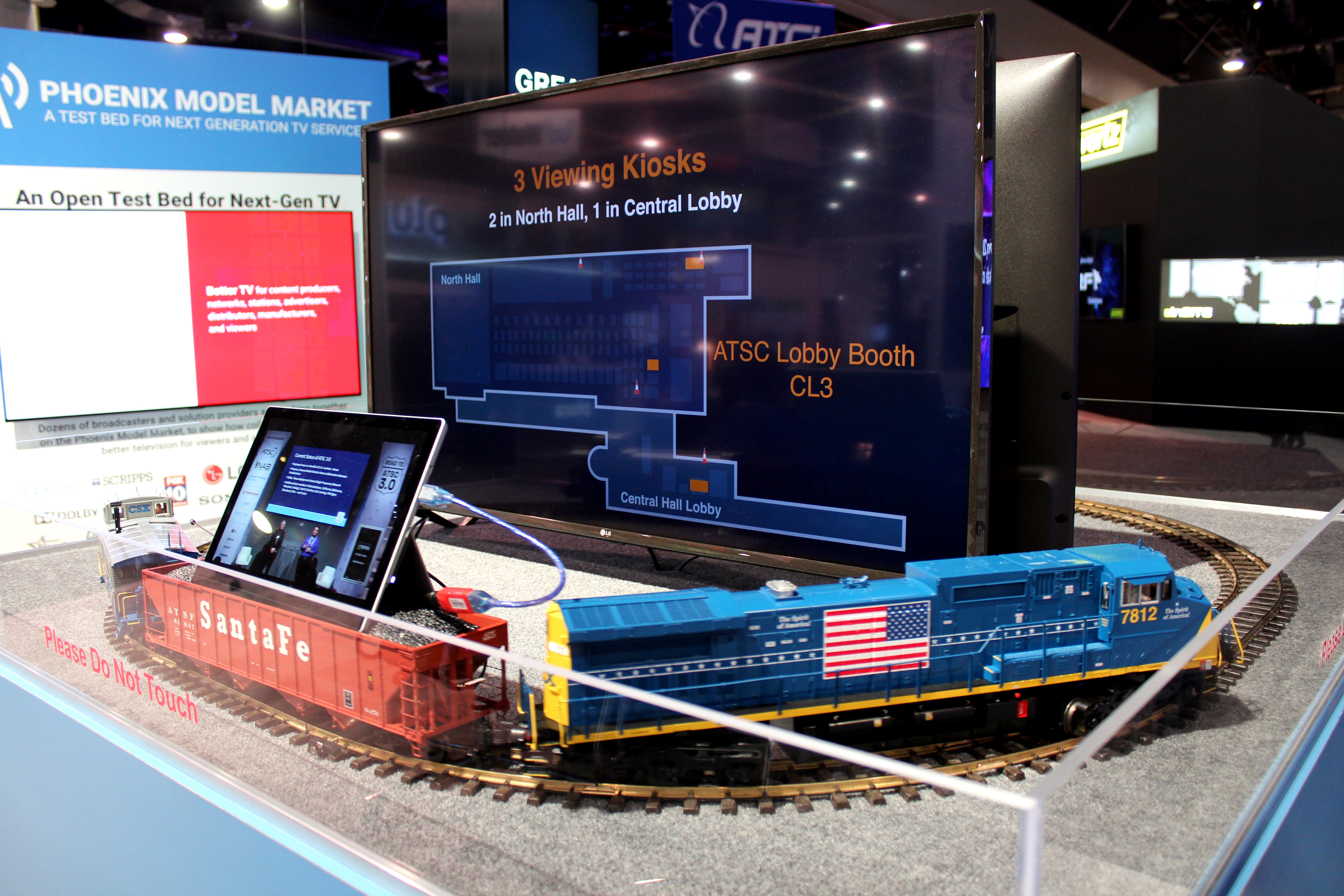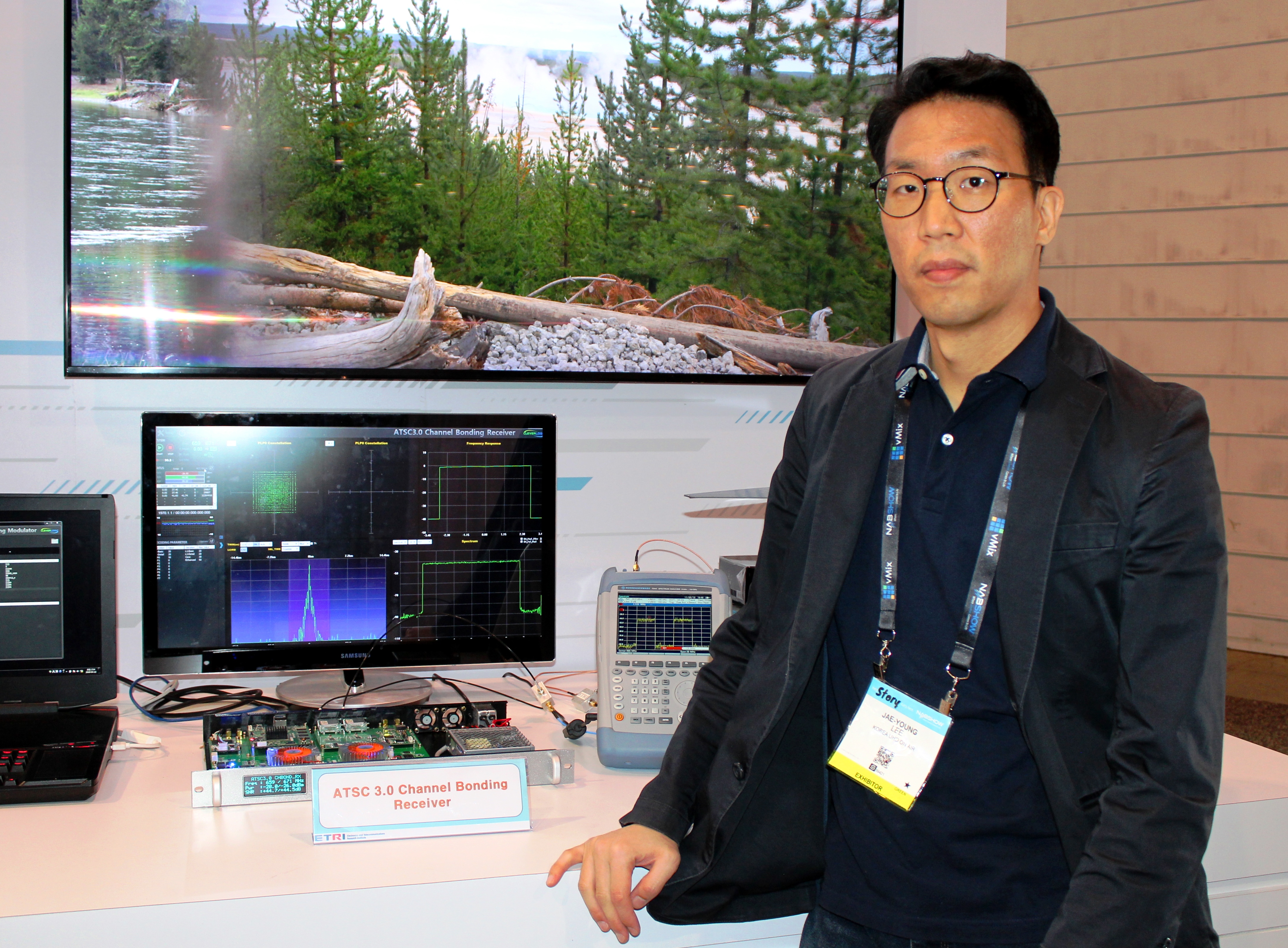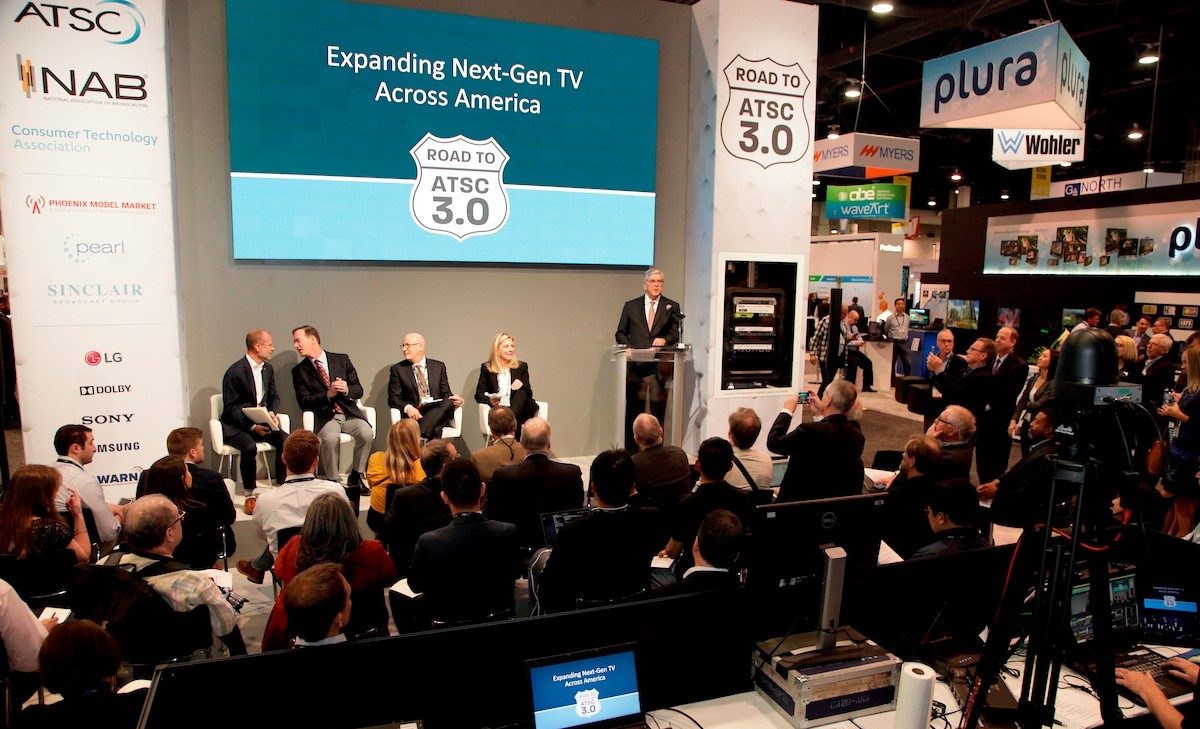NAB Show: Is There Traffic on the ‘Road to ATSC 3.0?’
LAS VEGAS—The “Road to ATSC 3.0” journey in the United States began more than five years ago, and for those waiting for the new DTV transmission standard to start edging out the existing ATSC 1.0, it has been a long one. The question from the back seat, it seemed, was not so much “when are we going to get there?” but rather “are we ever going to get there?”
To anyone who “trod the boards” at this year’s NAB Show, it was very apparent that the ATSC 3.0 “road” is finally open for business and ready to start taking high-speed traffic.
Perhaps the single biggest news story emanating from the Las Vegas Convention Center this year was the announcement that some of the biggest players in television broadcasting have joined together in an effort to fast-track Next-Gen television’s availability in the 40 largest U.S. television markets. Players in this collaborative effort include Cox Media, Fox, Gray Television, Hearst Television, the News-Press & Gazette Co., E.W. Scripps, Hubbard Broadcasting, Capitol Broadcasting and, of course, the Sinclair Broadcast Group, which has been championing 3.0 practically ever since the ATSC issued its “call for proposals” to develop a new system in 2013.
At the press conference, FCC Commissioner Brendan Carr advocated for broadcasters to use ATSC 3.0 to innovate and better compete with telecommunications companies.
“It’s important that the FCC authorized broadcasters to start experimenting with ATSC 3.0, giving you the freedom to innovate—a freedom that your competitors and many others in the tech sector already enjoyed,” he said. “And when I think about the ways that broadcasters can use that freedom to innovate, one use case stands out to me: ATSC 3.0 as a new and competitive broadband pipe.”
A key component in a successful introduction of ATSC 3.0 in the United States is the availability of receivers to receive the hybrid off-air/IP transmissions.

There seems to be movement on this front too, based on a show-time announcement from the senior vice president of the Consumer Technology Association’s research and standards division, Brian Markwalter.
The professional video industry's #1 source for news, trends and product and tech information. Sign up below.
“We expect CES 2020 will feature a wide variety of reception devices—integrated 4K Ultra HD TVs, gateway receivers, portable devices and more—optimized for reception of Next-Gen TV signals,” he said.
ATSC 3.0 NO SHRINKING VIOLET AT 2019 SHOW
So, aside from these announcements of 3.0 solidarity and support from both broadcasting and consumer electronics sides, what else was there at the 2019 NAB Show to strengthen the belief that ATSC 3.0 will be arriving on these shores in short order?
In a word, plenty!
In strolling through the halls this year, it appeared that there were more ATSC 3.0-related broadcast products being shown, 3.0-oriented technical and business presentations going on, and demonstrations of Next-Gen TV than at all other previous shows.
And promoters of the DTV transmission standard made sure that show attendees didn’t miss anything, with copies of “Your Guide to ATSC 3.0 at the Show” being distributed at a large circular information center in the Central Hall concourse. The guide, in addition to flagging all exhibitors with 3.0-relevant items or services, provided a day-by-day schedule of events taking place at a special “Riding the Road to ATSC 3.0” presentation stage set up in the North Hall, and even included a reference listing of the “elements” comprising the 3.0 suite of standards.
Even if attendees managed to miss the information center and guide, there were other visuals to attract attention to the new standard in the form of model railroad displays at various locations, with diminutive CSX freight engines pulling minuscule cars carrying tablets showing off 3.0 over-the-air reception.

ATSC 3.0 IN FUTURES PARK
While there were plenty of ATSC 3.0 reminders distributed throughout the three exhibit halls, perhaps the largest cluster of devices and demos was found at the Korean exhibit in North Hall’s Futures Park.
Korea’s Electronics and Telecommunications Research Institute (ETRI) showed a complete line of ATSC 3.0 dongles, set-top converters, and home gateways for distributing received 3.0 to companion devices in a user’s home, and more.
One of the demos seemed especially relevant, as 8K UHD continues to gain ground. This was the RF transmission and reception of 8K video, something that at the present state of compression technology, even the new ATSC 3.0 standard isn’t quite up to yet in an “ordinary” deployment.
As explained by ETRI’s principal research scientist, Jae-young Lee, the 7680x4320 resolution video transmission feat was accomplished by the bonding of two six-MHz ATSC 3.0 channels.

“The bitrate needed is about 80 Mbps,” said Lee. “We can accommodate this by combining two standard TV channels. The channels can be contiguous or non-contiguous.”
He noted that the bonded-channel transmitters and receivers being used were fully compliant with ATSC 3.0 A/3222, which supports the bonding of channels to achieve greater throughputs.
Jang Seok Young, South Korea’s deputy minister of Science, Information and Communications Technology was also at the Korean Pavilion, and was asked about the very rapid rollout and acceptance of ATSC 3.0 in his country, which began more than two years ago.
“As compared to the U.S., South Korea was in a better position to roll out ATSC 3.0,” said Young, speaking through an interpreter. “Major broadcasters needed to change their business model, as terrestrial stations [have been losing] market competition against paid TV service providers such as cable, satellite, IPTV and OTT.
“ATSC 3.0 has the ability to be connected to the internet, so terrestrial broadcasters can provide more services and provide better viewing experience,” Young added. “Also, the Korean government put aside 700 MHz spectrum for UHD broadcasting service. This decision drove the industry harder to launch UHD broadcasting using ATSC 3.0 in Korea.”

He added that the move to 3.0 Next-Gen broadcasting in his country has benefitted broadcasters, set manufacturers and consumers alike.
MORE ATSC 3.0 HARDWARE
At an invitation-only suite shared by the Sinclair Broadcast Group and chip-maker Saankhya Labs at the Wynn, a constant flow of industry representatives wanted to learn more about uses for the tiny low-power ATSC 3.0 integrated circuit that Saankhya unveiled at the International CES in January.
Demos have progressed from a “bread-boarded” prototype receiver in January, to a fully-developed “dongle” that snaps into a vacant USB port on a handheld device, instantly turning it into a 3.0 TV receiver.
According to Vasanth Shreesha with Saankhya, the company integrated their SL3000 chip for demodulating and decoding ATSC 3.0 into a USB dongle that can plug into mobile devices, enabling them to receive the ATSC 3.0 signal and display it.

Shreesha said the chipset could equally function as the heart of ATSC 3.0 TVs, set-top boxes and gateway devices. However, when asked if the dongles shown were commercially available, he answered in the negative, but did offer that “we’re working with vendors to bring this to market by early next year.”
Saanhkya was also showing a complete low-power ATSC 3.0 transmitter designed for mast mounting, which can be used either for deploying service in a small community or as a possible adjunct to an existing wireless broadband carrier’s service to reduce overloading the network when large numbers of customers decided to stream a popular event.
A PLEA FROM AN INDUSTRY GIANT
With all of the excitement about ATSC 3.0 at this year’s NAB Show, untold thousands of words were spoken there about it and its deployment. None though, seemed as direct and passionate as those of the executive chairman of the Sinclair Broadcast Group, David Smith, when he addressed a large audience gathered for a Monday afternoon press event.

“ATSC 3.0, as far as I’m concerned, is the single biggest opportunity that’s ever been available to the broadcast industry,” said Smith. “… 3.0 is really ready for deployment and it’s time for this industry to get out of its own way and do what’s clearly in its own best interest … it’s going to be incumbent upon us as an industry to literally coalesce market-by-market, and get this thing built out for the express purpose of the broadcast industry’s survival.
“I would encourage anybody in this industry who has any influence whatsoever to do everything in your power to get your platform rolled out as fast as possible. It’s a matter of life for this industry and it’s a matter of the public interest and for the public to be served at large in the grand scheme of things.”
For a comprehensive source of TV Technology’s ATSC 3.0 coverage, see ourATSC3 silo.
James E. O’Neal has more than 50 years of experience in the broadcast arena, serving for nearly 37 years as a television broadcast engineer and, following his retirement from that field in 2005, moving into journalism as technology editor for TV Technology for almost the next decade. He continues to provide content for this publication, as well as sister publication Radio World, and others. He authored the chapter on HF shortwave radio for the 11th Edition of the NAB Engineering Handbook, and serves as contributing editor of the IEEE’s Broadcast Technology publication, and as associate editor of the SMPTE Motion Imaging Journal. He is a SMPTE Life Fellow, and a member of the SBE and Life Senior Member of the IEEE.

